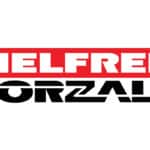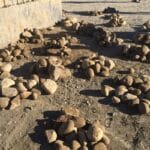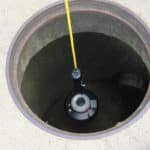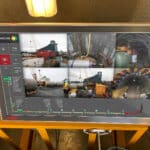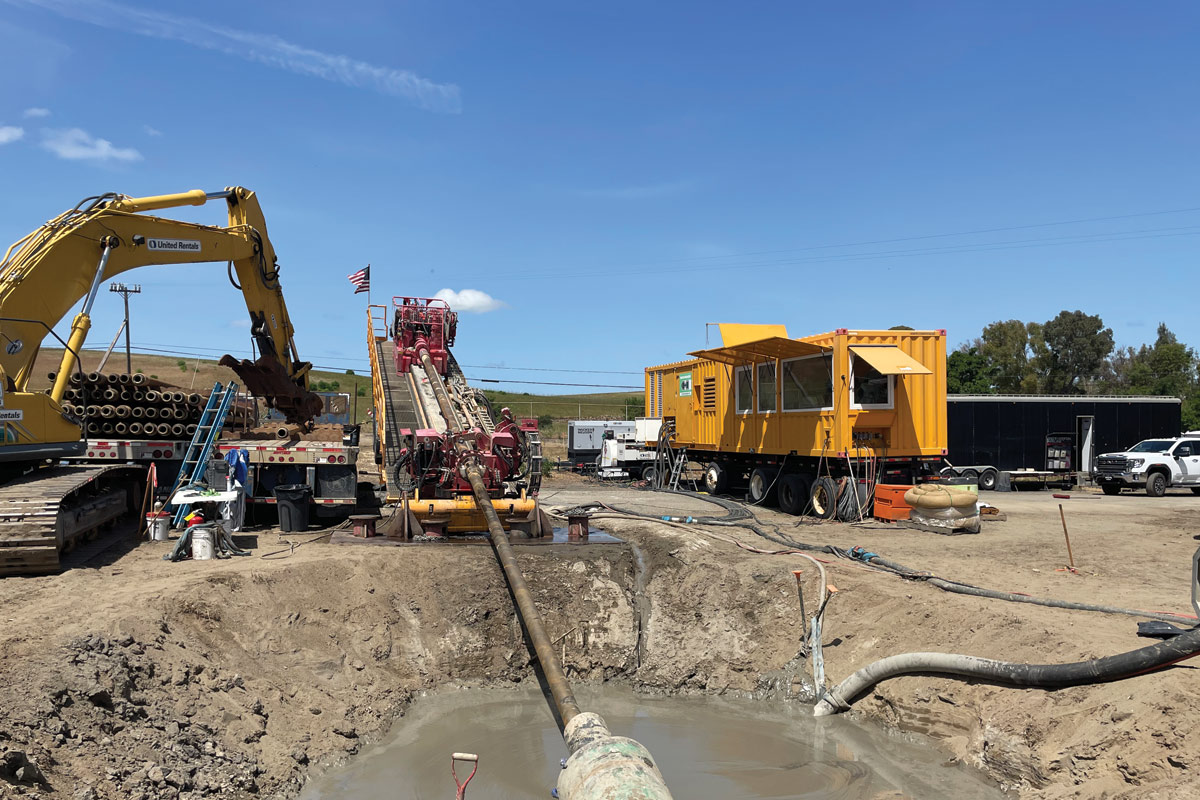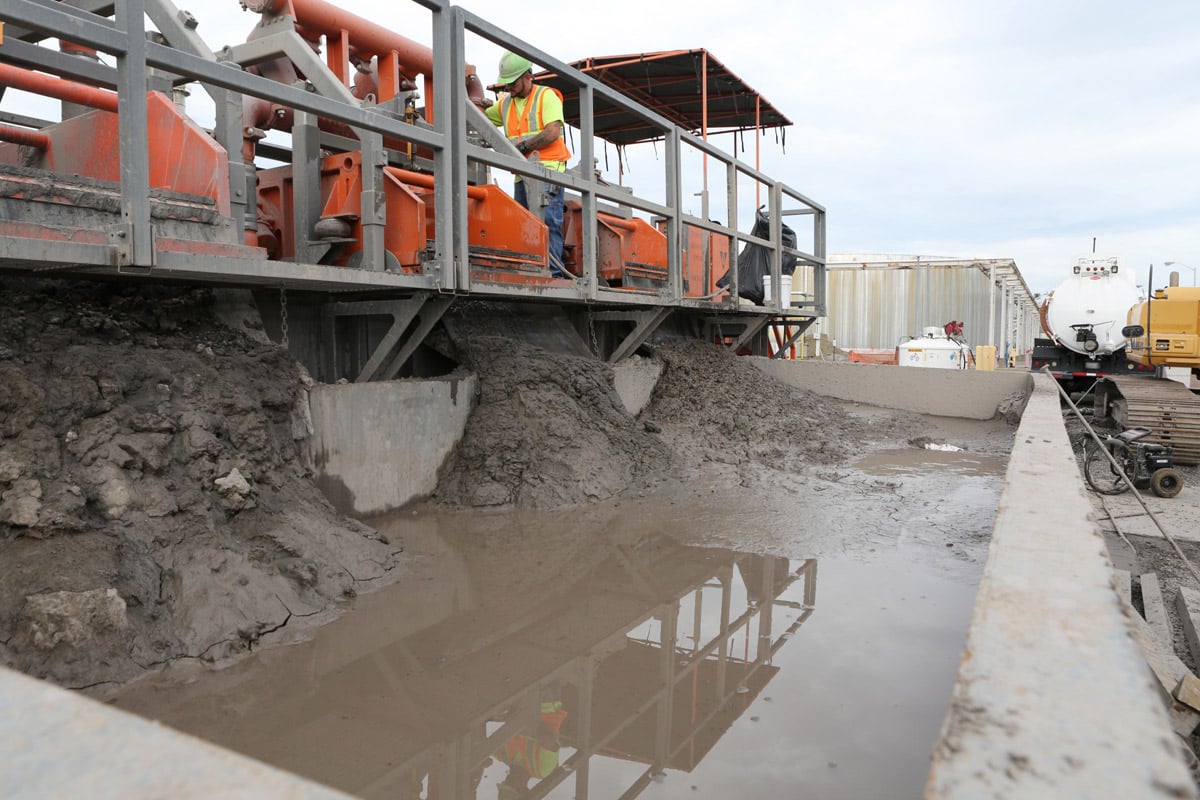
Why you Need a Properly Sized, Properly Performing Solids Control System on HDD Projects
Utilizing a properly designed and operated solids control system (mud recycling/reclaiming system) on your HDD projects is critical. Drilling with unprocessed fluid is like sandblasting the inside of your equipment. The dirty fluid is highly abrasive.
Reclaimers are used to mix and reclaim bentonite drilling fluids for the HDD market as well as water well, oilfield, and geothermal projects. The drilling fluid is used to flush the cuttings from the bore hole, to cool the drill bits, and stabilize/seal the bore hole. In rock drilling applications the drilling fluid pumped downhole hydraulically powers down-hole mud motors. Drilling fluid is then returned to the surface to a pit, usually the entry pit or exit pit. It is then transferred by a pit pump to the reclaimer for processing.
Reclaimers will process the fluid in several stages.
The returned fluid is pumped to the scalping shaker, which is fitted with courser mesh screens- typically 20 to 60 mesh. This removes the larger particles from the drilling mud. Then, it deposits the unwanted spoils/material over the side of the reclaimer.
The spoils are collected in a container or next to the reclaimer. The fluid that passes through the screens is collected in a tank. It is then transferred by a centrifugal pump and sent to the next phase.
On larger volume systems such as 500 GPM and larger, there is a desander cone stage. The fluid is pumped through the side of the desanding cone creating a centrifugal motion. The heavier solids/material drop out the bottom onto a shaker bed to be processed. They are then discharged off the side of the reclaimer. The lighter fluid passes out the top of the desanding cone and enters the next tank for further processing which is the desilting stage.
In the desilting process, smaller hydrocyclones cones are used to process the fluid for the final stage. The size of the cones will dictate the cut-point size of the solids removed. The smaller the hydrocyclone cones, the finer the cut-point it will remove.
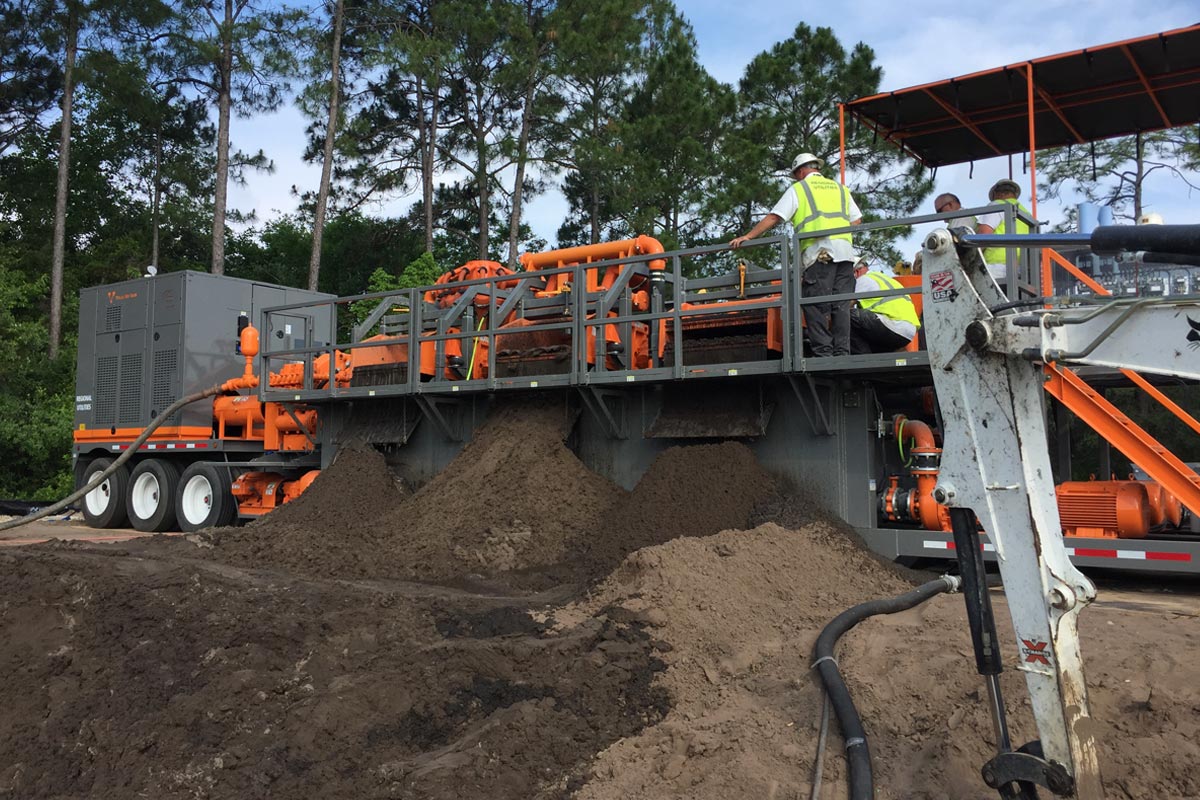
The production is based on the number of cones and the volume of fluid in the system. For example a 1,000 gallon per min unit will have 2- to 10-in. cones processing 500 gpm each. It will also have twelve 5-in. cones processing 80 gpm each. Each set of cones are attached to a manifold over a shaker bed with different size mesh screens. This further dries the cuttings for depositing over the side, or out of the rear of the reclaimer.
There are three types of shaker designs- linear, elliptical, and orbital. We prefer linear design, as it allows you to run a finer mesh screen and still get a dryer cutting.
The final stage cleaned fluid is collected in the final tank. Here, it can be tested for viscosity, sand content, and mud weight.
The fluid may be prepped with more bentonite or additives to increase the viscosity. This is done by using a mud hopper to properly shear the mud. Proper PH of the water should be checked in order to get the bentonite to yield properly. Once you have the desired PH, you are ready to add your bentonite and other additives needed to complete the bore.
Most reclaimers utilize pumps with mixing jets, or some type of agitators in the tanks to keep the fluid properly mixed.
Finally, a charge pump is used to pump the clean drilling fluid back through either a stand-alone triplex mud pump skid. It may also go straight to the drill rig with an onboard mud pump to be reused.
The Many Advantages of Using a Mud Reclaimer
- They reduce the amount of water, bentonite, and other additives needed by re-using the drilling fluid.
- They properly clean the fluid to be reused back downhole. This greatly diminishes the excess wear of expendable parts down the entire drill string and the reclaimer itself. This will save on the actual expendables costs, as well as the unplanned downtime.
- It retains the bentonite properties, so smaller amounts will be needed to retain the proper viscosity for the driller when maintaining the mud mixture.
There is not a one size fit all reclaimer for all drill classes. Proper consideration should be taken in matching a reclaimer to a particular size drill rig. Otherwise you may end up with a reclaimer that is too small or too large for your true needs.
These considerations are: size of the drill and its onboard mud pump (if equipped), and the typical use and range of use of the drill. Utilization of the proper sized and operated quality mud reclaimer, along with a properly sized quality triplex mud pump, will be crucial. This ensures you get the maximum performance out of your drill.
Tips on Reclaimer Care
- Follow proper regular maintenance per your manufacturers requirements.
- Check your solids content often, the goal is ¼ of 1 percent or lower. Keep on hand and use a sand content kit, viscosity cup and funnel, and mud scales.
- Keeping an ample supply of varying mesh screens on hand, in order to fine tune the system.
- Proper mesh selection and periodic rinsing will help avoid blinding or plugging the screen mesh.
- Don’t put the new green hand in charge of the mud system. This position needs to be a knowledgeable person that can fine tune your mud as you drill. Invest in sending your mud man to a quality mud school for proper training.
Terry Flynn is vice president of sale and marketing at Tulsa Rig Iron.
Latest Posts
- The Human Edge in an AI World: Why Skilled HDD Crews Still Reign Supreme
- Geotechnical Considerations for HDD to Mitigate Risk
- Understanding Manhole Inspections and Their Role in Infrastructure Management
- Product Showcase – VMT Launches TunnelHub
- ASCE Region 9 Releases 2025 Report Card for California’s Infrastructure
Next Up
HDD Academy | February 19-20, 2026 | Scottsdale, Arizona | Learn more

